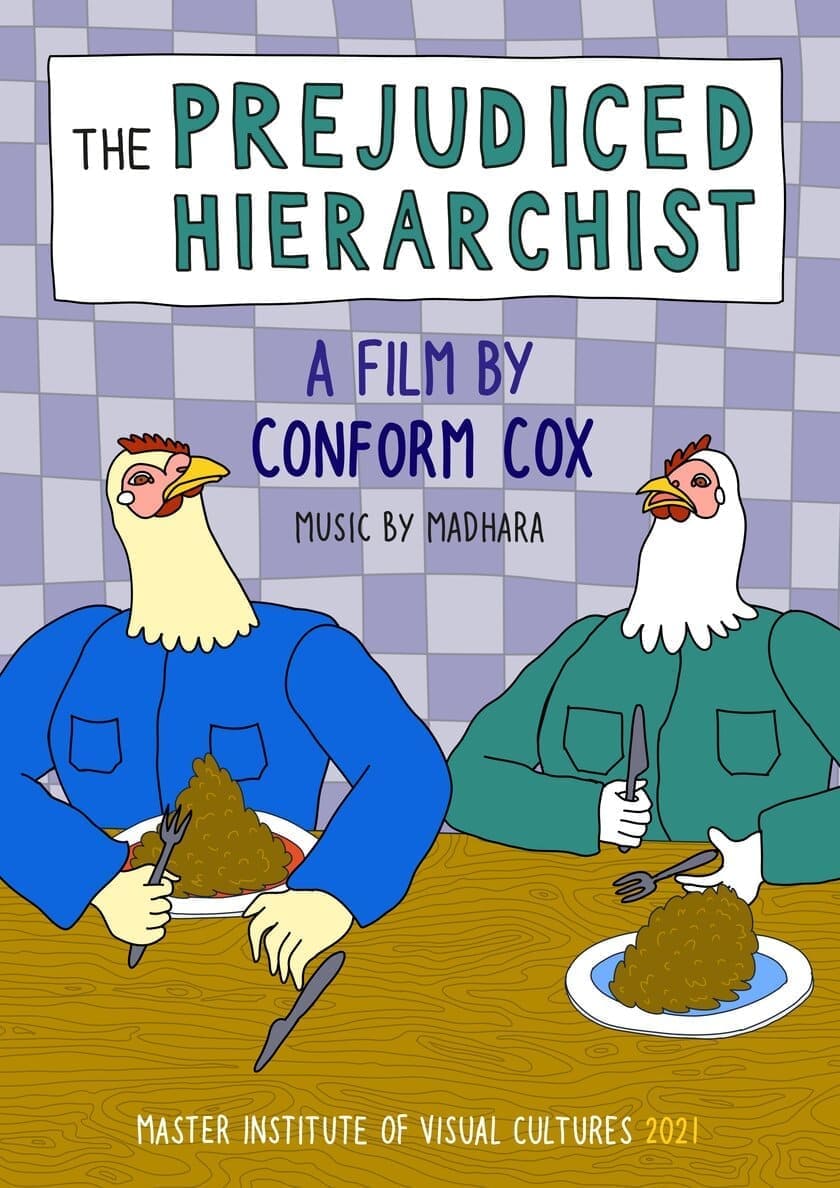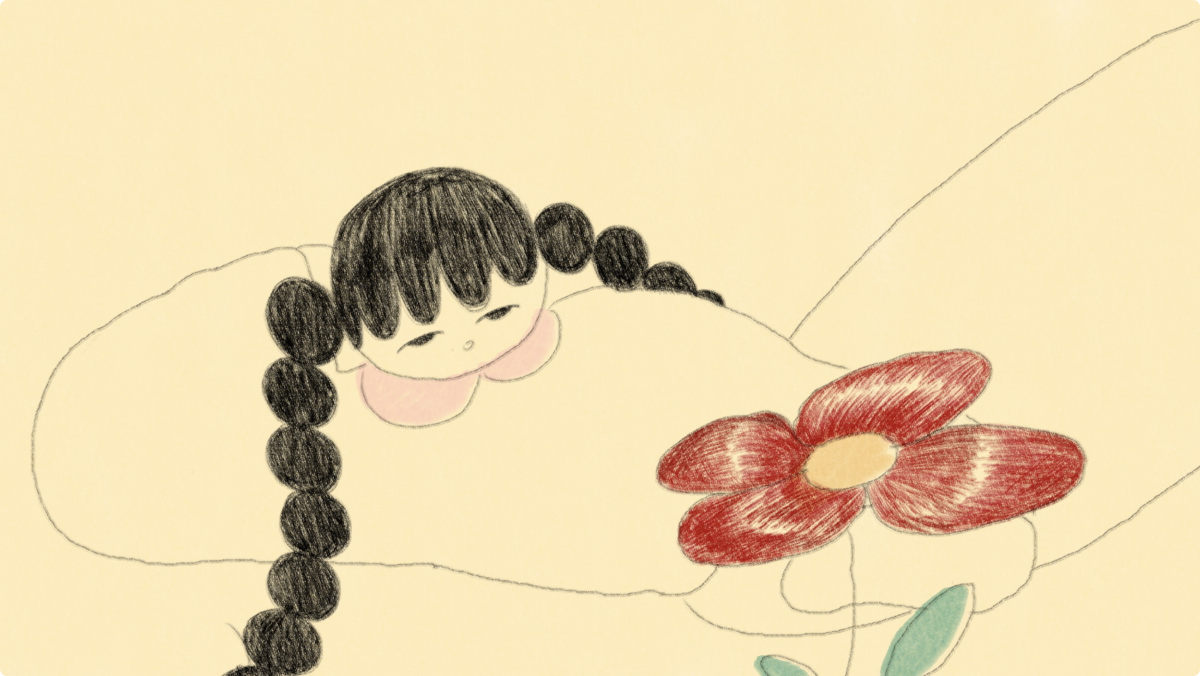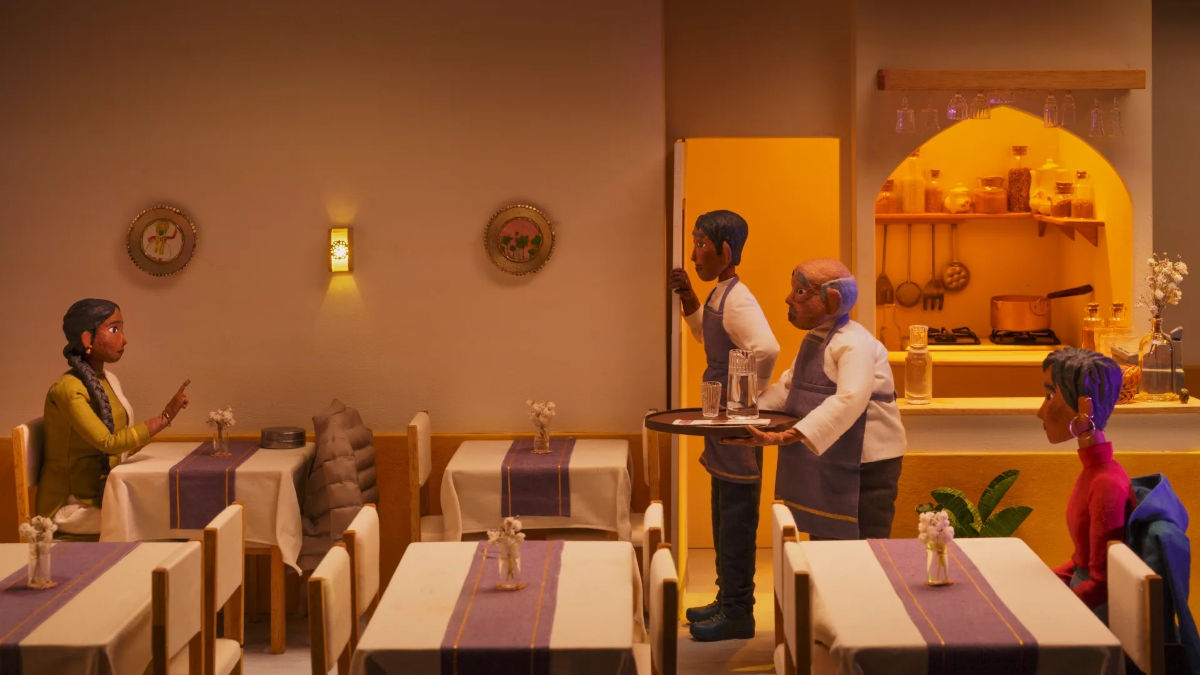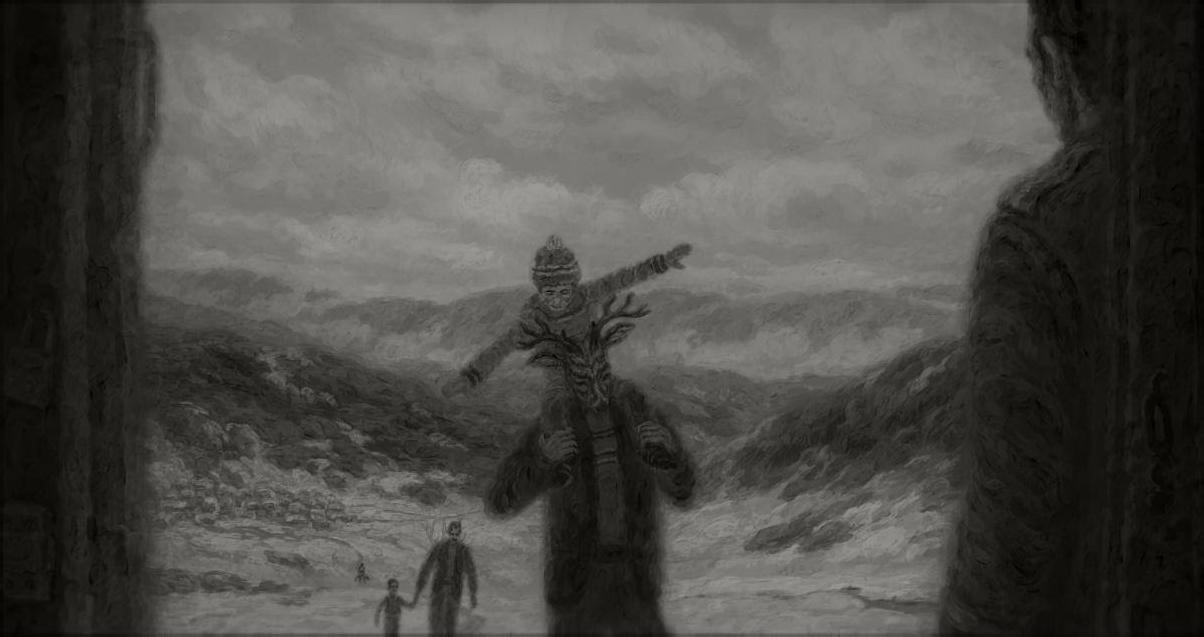The Prejudiced Hierarchist by Conform Cox

Netherlands-based animation artist Conform Cox crafts her short film 'The Prejudiced Hierarchist' and talks about animals in a different way in the process. Being initially trained as an illustrator, her graduation short (a one-year Master's thesis from the Master Institute of Visual Cultures in Den Bosch, The Netherlands) is her first animation effort - and a successful one, competing at festivals like Animac International Animation Film Festival of Catalonia, Monstra Lisboa, and Animateka International Animated Film Festival.
For a long time, humanity has separated itself from animality. But the more scientists know about non-human animals, the more they see similarities with humans. We need animal emancipation to go forward. This short movie makes a start in breaking down human hierarchical ideas about other animals, using real-life examples - Film Synopsis
ZF: This is an unusual topic, even for animation. You reverse the usual anthropomorphic animals to make a comment about animal speciesism. How did that come about?
CC: I read an article about animal emancipation ('Why animals should have civil rights' by Roanne van Baren), in which researchers prove that our hierarchical idea of humanity above animals should be changed. In the past, any assignment of anything other than instinct to animals would be labeled anthropomorphism. Only more recently there is more attention to animal behavior: the things they need to survive and thus be smart, depend on very different circumstances. And there are actually no unique human traits: all the characteristics that we find so unique about humanity can be found in other animal species, since the natural world is interconnected. This was the inspiration for this film, to show examples of animals that have these traits. I also looked into the representation of animals in animation: what kind of stories do films tell, and how are animal-like figures used? Animals were mostly used as a metaphor, or just purely visual, and I rarely saw stories that told actual experiences of the animals used. The anthropomorphic depiction of animals in animations had upsides (creating more empathy, even for queer characteristics or female leaders for that matter) and downsides (anthropocentrism, boosting the exploitation of wild animals used as pets, over-romanticized nature). I decided to tell real stories of animals through anthropomorphic animation, rather than telling a human story, but later in the animation show, it becomes about both humanity and the real animals.
ZF: What was your research like? Why did you pick up these specific animals and not others?
CC: I picked six characteristics/qualities that are usually thought of as very human-like: talking, farming (and planning), democracy (making decisions together), having a long-term memory, being empathetic, and understanding what death means. I then searched for a variety of animals to tell about these qualities, looking at: them being not only mammals (since mammals are most often used in animation), being not per se popular animals, them being also everyday animals (at least, from my Northern European point of view) and also having an animal that lives mostly locked up by humans, in industry.
This led me to this list: chickens, termites, red deer, eels, flying foxes, and crows -so, mammals, birds, a fish, and an insect. I chose chickens because they are often seen as dumb and their situation in the farming industry is mostly very bad. All fish are mostly seen as stupid as well, invisible. I chose crows over elephants to show mourning, because elephants are more often celebrated and crows are mostly depicted as bad guys. I chose red deer over buffalo because they are normal in northern Europe and less tropical. I chose termites because insects are often seen as disgusting, while they built the greatest architecture and grow mushrooms inside. I picked flying foxes because I found this beautiful story where they help another flying fox give birth, and also when they have no relation to this animal at all.
Watch 'The Prejudiced Hierarchist':
ZF: Your film is colorful and vibrant. Does that come from your background as an illustrator or it was the topic itself that motivated you as well?
CC: Indeed I feel I can’t live without colours. As long as I remember I wanted to combine every color with several others, for me, you can’t have enough colors to help brighten up the sadness in our world. For this animation, I picked colors that would be in the first part of the film, being in the human world, in reference to the second part of the film, being in the natural world. It hopefully helps the viewer understand that what the animals say in the first part about themselves is actually true.
ZF: Was your film a solitary effort, being a student film? Or did you have people who helped you?
CC: I made this film mostly on my own, from the research till the end, I had around 4.5 months of working every day. In the last weeks, I asked some help of non-animator friends who helped me color all the frames, but I first had to explain the animation program.
ZF: You're looking for empathy in your film. And I really liked that scenes with talking animals are followed by silent, affectionate scenes. Was that on purpose?
CC: The transition is to show that what the animals are saying, is actually true about their species. I never used anthropomorphic animals before in my illustrations, but learning from my research I saw the benefits of telling this story. I like silent films as well a lot, but I needed spoken word to make the message clear: this combination seemed perfect. Another layer of the story is that in the first part of the film, you can also see humanity bragging about their qualities.
ZF: What do you think you have learned from this process in terms of conceptual framework? A better understanding of our fellow animals? Or a better understanding of ourselves? And would you continue in this vein in your future efforts?
CC: I like to use science as a base for my projects, and this was a great learning experience in how to engage people, but also be critical. I for sure have learned more about other animals and continue to read books about animal behaviour. I look different now at the pigeons on my balcony, I appreciate them more: it is easy to fall for the talk you have been hearing while growing up, for example, that people say that pigeons are stupid and disgusting. I now question these assumptions more. I think indeed if you view humanity more in connection with the living creatures around us, you will understand yourself and your instincts better. I am working now on a new animated short, with a different topic, but it is related for sure. There are so many takes on this yet to discover and to find inspiration in.
'The Prejudiced Hierarchist' is a film that challenges our assumptions, and makes fine use of our lovely friends in so many different surroundings that we start getting a cartography of responses of a society. Without preaching, it informs and affects our understanding and empathy, and we start thinking of animals as agents (instead of pets). A welcome animation short.
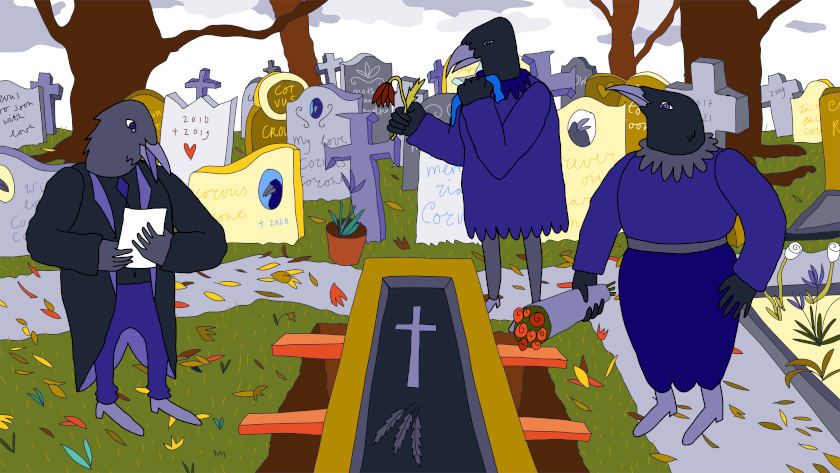
Credits:
'The Prejudiced Hierarchist', 2D animation, 2021 (2'24'', The Netherlands)
Concept, direction, art direction, animation, sound design: Conform Cox | Music: Madhara | Voice acting: Dewi Kruijk, Nicky Liebregts, Pablo Martín, Bob Powers, Nikki Theeuwes, Jeanine van Tienhoven, Louise de Vries | Graduation animated short film for MA animation at Master Institute of Visual Cultures AKV ST Joost, Den Bosch, The Netherlands (Cum Laude)
About Conform Cox:
As long as she can remember, Conform Cox (Cox Janssens) has been driven by learning and creating. As a child, she wanted to explore everything and become a ‘Homo Universales’ as a job. Cox never lost this eagerness to be a know-it-all: She is trained as a designer at Design Academy Eindhoven and an animator at the Master Institute of Visual Cultures in Den Bosch, finishing both studies Cum Laude. Cox works as an illustrator, animator, graphic designer, podcast maker, and textile designer. In all these fields (in-depth) storytelling is the drive and core of her practice. In her free work, Cox loves to collaborate with people in education and science, to show several processes, or to question ‘the normal’ in different ways. She very much believes in the accessibility of visual stories.
